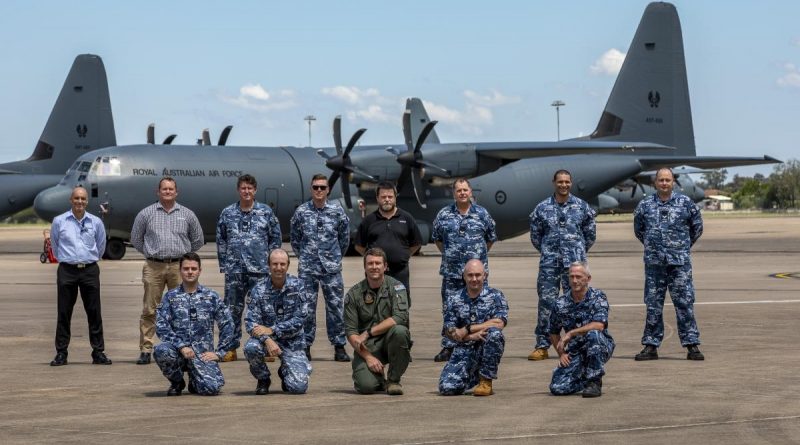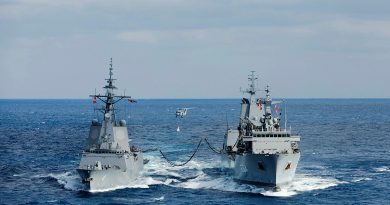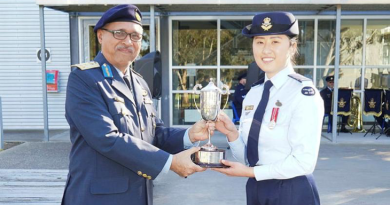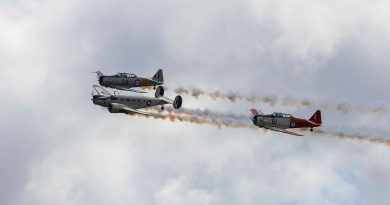Leading the way in training

Often the first to arrive during operations, Air Force’s No. 37 Squadron is also now first to comply with new Defence-wide training regulations.
CAPTION: No. 37 Squadron Technical Training Flight at RAAF Base Richmond, New South Wales. Story by Eamon Hamilton. Photos by Corporal Dan Pinhorn.
All Defence flying units are required to revise the training of their technicians under the new Defence Aviation Safety Regulation (DASR) 66/147 guidelines, which are closely aligned with internationally recognised standards.
In the past two years, No. 37 Squadron has revised the courseware it uses for training technicians to work on the C-130J Hercules transport aircraft.
In November 2021, No. 37 Squadron was the first Defence flying unit to be marked as compliant with DASR 66/147 regulations by the Defence Aviation and Safety Authority (DASA).
Commanding Officer No. 37 Squadron Wing Commander Anthony Kay said it was a great achievement for the squadron’s Technical Training Flight.
“The introduction of DASR 66/147 compliance means we’re producing graduates who are far more advanced in their skills when they are released into the squadron,” Wing Commander Kay said.
“This will further improve an already high-performing maintenance system, translating into increased aircraft serviceability and enhanced airworthiness assurance that maintains safe outcomes.
“The transition to the new courseware was also carried out whilst maintaining the No. 37 Squadron training schedule, with no additional funding or personnel, and during the COVID-19 pandemic.”
No. 37 Squadron has operated a fleet of 12 C-130J Hercules from RAAF Base Richmond since 1999, and provides airlift support around the world.
“The squadron is relatively unique because it delivers its technical training with uniformed personnel for the whole maintenance workforce,” Wing Commander Kay said.
“While the Hercules is a well-established platform for the squadron, Defence relies on us to sustain operations away from home, often at short notice and for sustained periods.
“Our away-base operations require a particularly proficient technical workforce, which this new courseware will help us to secure, well into the future.”
The No. 37 Squadron Technical Training Flight instructs avionics technicians and aircraft technicians who have graduated from the RAAF School of Technical Training.
Avionics technicians complete a 13-week course to work on the C-130J Hercules, instructing them on the aircraft’s electrical, avionics and defensive systems.

CAPTION: Avionics Technician, Aircraftwoman Chelsea West, furthers her studies in the No. 37 Squadron Technical Training Flight at RAAF Base Richmond, NSW.
Aircraft technicians meanwhile undergo a 10-week course that qualifies them on the C-130J’s engines, hydraulics and associated systems.
Prior to DASR 66/147 compliance, the courseware at No. 37 Squadron was entirely theoretical, with students completing practical elements as part of ‘on the job’ training after their graduation.
The new DASR 66/147 guidelines required the revised courseware to have at least 50 per cent ‘practical on course’ elements addressed.
Warrant Officer Wayne Francis, a Technical Training Flight Sections Commander with No. 37 Squadron, said the revised courseware now included 70 per cent all practical elements, and had used some innovative new methods to enhance the scope of technical training.
“The changes also required the creation of local instructions and processes to meet new regulations,” Warrant Officer Francis said.
“We’ve been able to include more practical elements within our training in the school house using 3D printing to create a broader scope of training aids.”
The DASR 66/147 also requires technicians to be licenced to work on their respective aircraft type, bringing them closer into line with aircraft international licencing standards.
“Air Force did not have that before – you were just authorised by Defence to work on that specific aircraft type – whereas now, there’s a licencing requirement for us to work on these aircraft,” Warrant Officer Francis said.
After graduating, brand new technicians are required to complete a workbook that logs their experience with real-world maintenance tasks.
Warrant Officer Francis said there had been a lot of hard work conducted to get the new courseware delivered without interrupting courses over the past two years.
“Part of being the first is setting the standard for other units to follow, and we’re going to other Defence units now to show how we’ve made this transition,” Warrant Officer Francis said.
.
.

.
.





